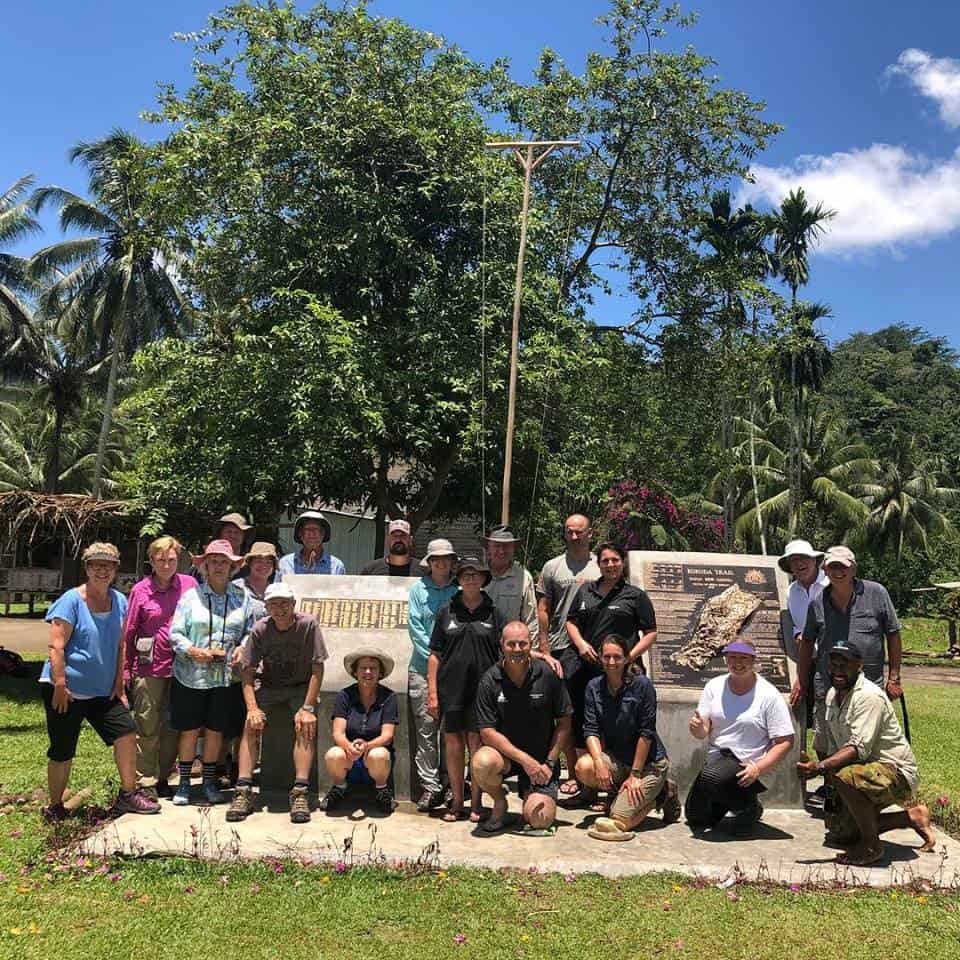It has been a long journey but finally there is a monument to commemorate the 133 young Australians – including at least one from Ipswich – who lost their lives in the Battle of Oivi-Gorari
Remembrance Day this year will have special significance for the loved ones of Australians who lost their lives at a significant spot on the northern end of the Kokoda Track.
November 11 also marks the final day of the Battle of Oivi-Gorari in 1942, one of the biggest battles of the Papua New Guinea campaign to that point – but a battle that until now had largely been lost to history.
This was despite being identified by an American historian as being probably the most significant battle of the Pacific theatre, with the Australians inflicting a crushing defeat from which the Japanese troops never recovered.
John Tannock, who works at Ipswich City Council, led a group which has just returned from a journey to PNG to unveil the only monument to honour that battle.
“To say the trip was a very moving experience doesn’t do it justice,” Mr Tannock said.
“Our party was made up of relatives and family friends of diggers who were killed or wounded at the particular battle site located about two miles to the south of Gorari.
“There were moments when all of us succumbed to the emotion of the moment but there was always someone to offer a word of comfort.”
Mr Tannock said the people of Gorari were keen participants in the ceremony, even working through the night to decorate the monument in flowers, and many came forward to place poppies on the monument as the names of the fallen were read.
Alongside the group of diggers’ friends and relatives, and the people of Gorari and other nearby villages, representatives from the PNG Museum and the Australian High Commission attended the monument dedication.
The journey also had personal significance to Mr Tannock. On two previous visits to PNG he unsuccessfully tried to find the battlefield where his father was wounded – but on this trip “we finally struck gold” at the village of Waju.
“The villagers of Waju … even had a photo of Dad’s platoon commander, Ralph Fletcher, on a post ordained with flowers. Ralph was killed a few minutes before Dad was wounded on November 10,” he said.
Waju residents took the group to the spot that D Company of the 2/25th Battalion had occupied on the night of November 9, 1942.
“To our amazement, the weapon pits occupied by (D Company) were still there after 76 years,” Mr Tannock said.
“It was surreal to think that I was possibly standing in the weapon pit that my father slept in all those years ago.
“It was from these weapon pits that (D Company) attacked the Japanese at 0900 hours on November 10 and lost a number of men killed and wounded in the next 30 minutes.”
There were many highlights to the journey, but one standout for Mr Tannock was being able to present a laptop to the Gorari village for their school, on behalf of the Ipswich families of soldiers who fought in the 1942 battle.
“(That was) huge because they have very little in their schools except for the smiling faces of the children,” he said.

